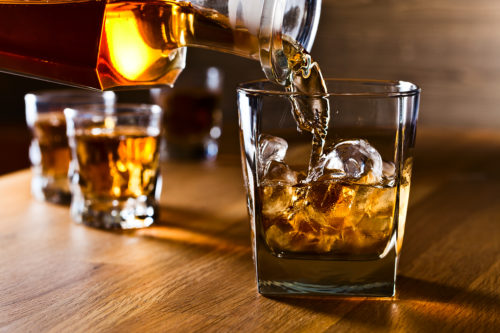How Many Drinks Makes You an Alcoholic?
Are you concerned that you or someone you love may be an alcoholic? It can be difficult to know exactly when someone has gone from being a recreational drinker to an alcoholic. Alcoholism can take many different forms depending on the individual affected and stereotypes you may have heard may not always hold true. The Substance Abuse and Mental Health Services Administration (SAMHSA) 2015 National Survey on Drug Use and Health (NSDUH) found that more than 15 million Americans over the age of eighteen were struggling with an alcohol use disorder and roughly 623,000 young individuals between the ages of twelve and eighteen were struggling with alcohol use disorder as well.
Alcoholism can be deadly and it’s important to know how to identify when an individual has slipped into an alcohol use disorder so that they can get the help they need. The Centers for Disease Control (CDC) and the Alcohol-Related Disease Impact Application (ARDI) has reported that roughly 88,000 deaths attributed to alcohol use occur in the United States each year. But how many drinks makes you an alcoholic? To assess whether or not an individual is suffering from an alcohol use disorder and needing to visit a detox center, there are a number of different factors to analyze.
Alcohol Abuse vs. Alcoholism
Many individual take part in casual drinking over the course of their lifetime, which is significantly different than abusing alcohol or suffering from alcoholism. The distinct difference is that casual drinking does not center around abusing alcohol. Alcoholism is when an individual develops an alcohol addiction or dependence, which means that they are suffering from a psychological or physical drive to drink alcohol. Alcohol abuse is when an individual drinks excessively as a pattern of behavior, despite any ramifications they may experience due to their excessive drinking.
How Many Drinks Makes You an Alcoholic?
Determining whether or not you are an alcoholic is more complex than simply determining how many drinks you have on any given occasion and is reliant instead on what your relationship is to alcohol. However, there are several parameters provided by the National Institute on Alcohol Abuse and Alcoholism (NIAAA) and SAMHSA that can guide an assessment of whether or not you are drinking excessively.
- The NIAAA defines binge drinking as when an individual exhibits a pattern of drinking that brings their blood alcohol concentration (BAC) level to 0.08 g/dL, which typically occurs after 5 drinks for men and 4 drinks for women in a period of two hours.
- The SAMHSA defines binge drinking as 4 or more alcoholic drinks for women and 5 or more alcoholic drinks for men on the same occasion on at least one day in the past month. They define the same occasion as within a couple of hours of each other or at the same time.
- SAMHSA defines heavy alcohol use as binge drinking on 5 or more days over the course of a month.
- The NIAAA defined the parameters for those individuals that are at a low risk for developing Alcohol Use Disorder (AUD) as women who have no more than 7 drinks per week and no more than 3 drinks on a single day and men who have no more than 14 drinks per week and no more than 4 drinks on a single day. Their research shows that out of the individuals who drink within these limits, only 2 in 100 people have AUD.
With these drinking parameters in mind, it’s also important to analyze the dynamic, signs and symptoms between the individual and alcohol to determine whether or not they may be suffering from alcoholism.
Ten Warning Signs You May Be an Alcoholic
If you’re concerned that you or someone you love may be an alcoholic, it’s vital to be mindful of some of the warning signs that an individual may be suffering from AUD. Below are ten warning signs of alcoholism.
- Inability to stop or control the amount of alcohol that is consumed
- Drinking first thing in the morning
- Experiencing feelings of guilt associated with drinking
- Alcohol cravings
- Drinking alone or in secrecy (hiding alcohol)
- Prioritizing drinking over other responsibilities, such as family or a job
- Irritability or extreme mood swings
- Losing interest in activities that were once enjoyable
- Continuing to drink despite problems that may be arising from drinking, such as financial issues, health problems, or family tension
- Experiencing alcohol withdrawal symptoms when attempting to stop drinking (such as anxiety or sweating)
It’s important to be aware of these signs of alcoholism and seek professional assessment if you think you or your loved one may be suffering from AUD. Alcoholism is a chronic and relapsing disease that requires an individual to fully commit to receiving addiction treatment, such as inpatient rehab, and to rely on a strong network of family, social, and spiritual support in over to overcome their addiction.
For more about alcohol addiction, contact us.
Sources:
Alcohol.org. “Alcoholism.” Retrieved from https://www.alcohol.org/alcoholism/.
Centers for Disease Control and Prevention. “Alcohol and Public Health: Alcohol-Related Disease Impact (ARDI).” Retrieved from https://nccd.cdc.gov/DPH_ARDI/Default/Report.aspx?T=AAM&P=f6d7eda7-036e-4553-9968-9b17ffad620e&R=d7a9b303-48e9-4440-bf47-070a4827e1fd&M=8E1C5233-5640-4EE8-9247-1ECA7DA325B9&F=&D=.
National Institute on Alcohol Abuse and Alcoholism. “Drinking Levels Defined.” Retrieved from https://www.niaaa.nih.gov/alcohol-health/overview-alcohol-consumption/moderate-binge-drinking.
The Recovery Village. “Am I An Alcoholic? The Difference Between Casual Drinking and Alcoholism.” Retrieved from https://www.therecoveryvillage.com/alcohol-abuse/faq/am-i-an-alcoholic-casual-drinking-alcoholism/#gref.

